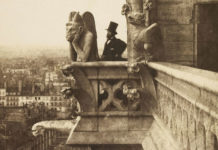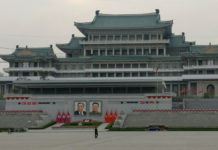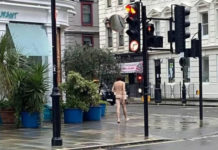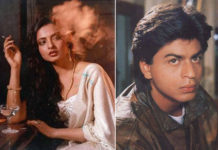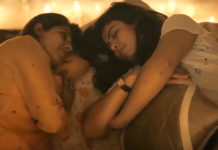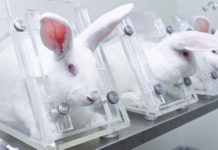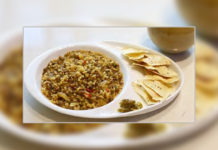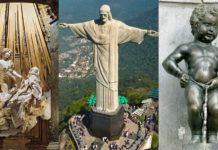Imenet:
 These symbols represent the west or western desert AKA the land of the dead. The horizon on which Ra dies at night and enters the underworld.
These symbols represent the west or western desert AKA the land of the dead. The horizon on which Ra dies at night and enters the underworld.
Ka:
 The ka is usually translated as “soul” or “spirit” The ka came into existence when an individual was born. It was believed that the ram-headed god Khnum crafted the ka on his potter’s wheel at a persons birth. It was thought that when someone died they “met their ka”.
The ka is usually translated as “soul” or “spirit” The ka came into existence when an individual was born. It was believed that the ram-headed god Khnum crafted the ka on his potter’s wheel at a persons birth. It was thought that when someone died they “met their ka”.
Khepresh:
 The blue crown was a ceremonial crown often worn in battle.
The blue crown was a ceremonial crown often worn in battle.
Khet:
 This symbol represents a lamp or brazier on a stand from which a flame emerges. Fire was embodied in the sun and in its symbol the uraeus which spit fire. Fire also plays a part in the Egyptian concept of the underworld. There is one terrifying aspect of the underworld which is similar to the christians concept of hell. Most egyptians would like to avoid this place with its fiery lakes and rivers that are inhabited by fire demons.
This symbol represents a lamp or brazier on a stand from which a flame emerges. Fire was embodied in the sun and in its symbol the uraeus which spit fire. Fire also plays a part in the Egyptian concept of the underworld. There is one terrifying aspect of the underworld which is similar to the christians concept of hell. Most egyptians would like to avoid this place with its fiery lakes and rivers that are inhabited by fire demons.
Maat:
 Represents truth, justice, morality and balance. Deities are often seen standing on this symbol, as if standing on a foundation of Maat.
Represents truth, justice, morality and balance. Deities are often seen standing on this symbol, as if standing on a foundation of Maat.
Menat:
 This symbol represents a heavy beaded necklace with a crescent shaped front and a counter piece at the rear. It was a symbol associated with the goddess Hathor and her son, Ihy. In fact , Hathor was known as the “Great Menat”. We often see Hathor using the Menat as a conduit through which she passes her power. It was representative of the ideas of joy, life, potency, fertility, birth, and rebirth. It was not uncommon in the New Kingdom, to see the king offering the Menat to Hathor. This probably meant to represent the king symbolically with the goddess’ son, Ihy. This idea of divine assimilation was common, although the best examples are of the king representing the falcon god, Horus.
This symbol represents a heavy beaded necklace with a crescent shaped front and a counter piece at the rear. It was a symbol associated with the goddess Hathor and her son, Ihy. In fact , Hathor was known as the “Great Menat”. We often see Hathor using the Menat as a conduit through which she passes her power. It was representative of the ideas of joy, life, potency, fertility, birth, and rebirth. It was not uncommon in the New Kingdom, to see the king offering the Menat to Hathor. This probably meant to represent the king symbolically with the goddess’ son, Ihy. This idea of divine assimilation was common, although the best examples are of the king representing the falcon god, Horus.
Menhed:
 A scribes pallet. Writing was a very important skill to the ancient Egyptians. It was practiced by a group called scribes. The writing equipment used by scribes consisted of a palette, which held black and red pigments, a water jar, and a pen. To be a scribe was a favorable position, even some kings and nobles are show proudly displaying scribe palettes.
A scribes pallet. Writing was a very important skill to the ancient Egyptians. It was practiced by a group called scribes. The writing equipment used by scribes consisted of a palette, which held black and red pigments, a water jar, and a pen. To be a scribe was a favorable position, even some kings and nobles are show proudly displaying scribe palettes.
Naos:
 Shrine in which divine statues were kept, especially in temple sanctuaries. A small wooden naos was normally placed inside a monolithic one in hard stone; the latter are typical of the Late Period, and sometimes elaborately decorated. Also used as a term for temple sanctuary.
Shrine in which divine statues were kept, especially in temple sanctuaries. A small wooden naos was normally placed inside a monolithic one in hard stone; the latter are typical of the Late Period, and sometimes elaborately decorated. Also used as a term for temple sanctuary.
Nebu:
 This symbol represents gold which was considered a divine metal, it was thought to be the flesh of the gods. Its polished surface was related to the brilliance of the sun. Gold was important to the afterlife as it represents aspects of immortality. By the New Kingdom, the royal burial chamber was called the “House of Gold.”
This symbol represents gold which was considered a divine metal, it was thought to be the flesh of the gods. Its polished surface was related to the brilliance of the sun. Gold was important to the afterlife as it represents aspects of immortality. By the New Kingdom, the royal burial chamber was called the “House of Gold.”
Nebty:
 The two ladies of upper and lower Egypt. Nekhbet the vulture goddess, protrectress of Upper Egypt and Wadjet the cobra goddess associated with lower Egypt and the Nile delta. There is a beautiful rendering of these two ladies in the White Chapel of Senwosret I.
The two ladies of upper and lower Egypt. Nekhbet the vulture goddess, protrectress of Upper Egypt and Wadjet the cobra goddess associated with lower Egypt and the Nile delta. There is a beautiful rendering of these two ladies in the White Chapel of Senwosret I.
Nekhbet:
 A goddess portrayed as a vulture. Protrectress of Upper Egypt.
A goddess portrayed as a vulture. Protrectress of Upper Egypt.
Nemes:
 A striped headcloth worn by Pharaohs.
A striped headcloth worn by Pharaohs.
Neter:
 The Gods or having to do with the gods.
The Gods or having to do with the gods.
Palm Branch:
 The Egyptians would put a notch in a palm branch to mark the passing of a year in the life of a pharaoh. It symbolized the measure of time.
The Egyptians would put a notch in a palm branch to mark the passing of a year in the life of a pharaoh. It symbolized the measure of time.
Pet:
 This symbol depicts the sky as a ceiling which drops at the ends, the same way the real sky seems to reach for the horizon. This sign was often used in architectural motifs; the top of walls, and door frames. It symbolizes the heavens.
This symbol depicts the sky as a ceiling which drops at the ends, the same way the real sky seems to reach for the horizon. This sign was often used in architectural motifs; the top of walls, and door frames. It symbolizes the heavens.
By: Archa Dave


